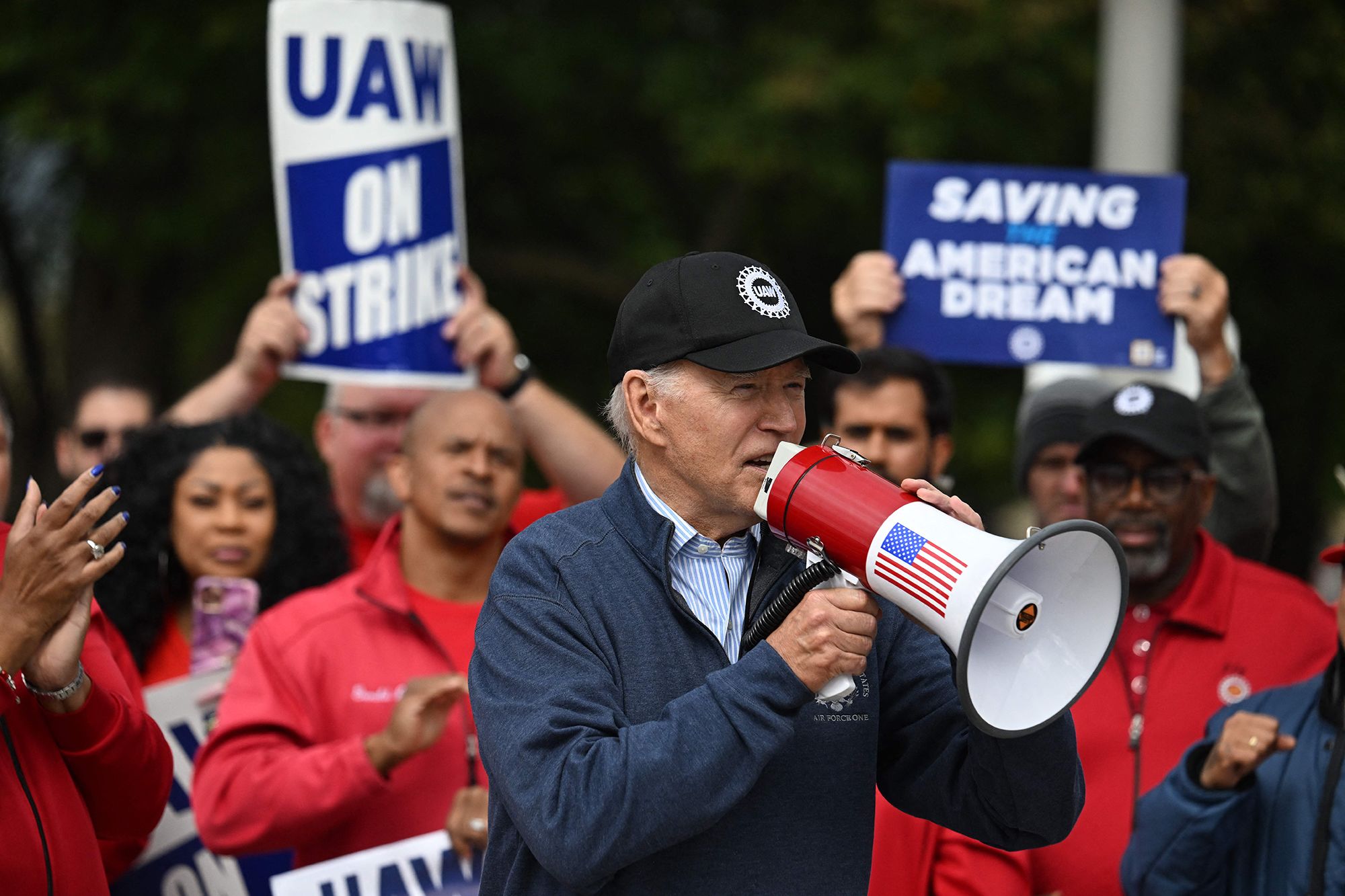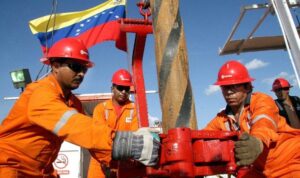
Published 09/28/2023 18:31 | Edited 09/29/2023 18:23
It is still too early to know whether the joint strike by metalworkers at Ford, General Motors and Stellantis in the United States will be successful. But workers at these automakers, struggling with legitimate demands, have already attracted unprecedented attention from both President Joe Biden and former President Donald Trump. It is increasingly likely that the battle for the heart of the union movement will be one of the central themes of the next US presidential election in 2024.
On Tuesday (26), Biden caused astonishment when he participated in a picket of strikers in Michigan, the “national capital of the automobile industry”. The movement is led by the UAW (United Auto Workers), which represents 143,000 workers in the automotive sector nationally. None of Biden’s 45 predecessors – from George Washington to Trump himself – dared to get so directly involved in a labor strike.
After all, why did the president star in such a pioneering and unusual scene?
To reach the White House, Biden faced Bernie Sanders in the Democratic Party primaries. His rival declared himself a “socialist” – he represented the Democratic Socialists of America (DAS) –, ran unions and openly supported strikes. In the caucuses, Sanders endorsed Medicare for All (a type of SUS for the United States) and promised to forgive student debt.
Although he is older than Biden, Sanders especially mobilized younger voters, as well as strata of the working class. It wasn’t enough to give him the candidacy – the Democrats bet that a “moderate” name could attract more supporters and prevent Trump’s re-election. Biden, in fact, won the race in 2020 and became president of the United States. Most of Sanders’ flags were forgotten, except for the union issue.
On September 20, when the presidents of Brazil and the United States signed the Partnership for Workers’ Rights in New York, Biden reinforced this bond. “We don’t want just one class to do well. We want the poor to have opportunities to move up in life – and this vision is driven by a strong labor force,” he said, alongside Brazilian Luiz Inácio Lula da Silva. “That’s why my administration has been called the most pro-union administration in American history.”
Not that it’s such a complex competition. Abraham Lincoln (1809-1895), the greatest occupant of the White House, abolished slavery and promoted agrarian reform – but in a pre-union period. Theodore Roosevelt (1858-1919) even declared support for strikes, without, however, appearing publicly in demonstrations. Among Democrats, Franklin D. Roosevelt (1882-1945) and Harry Truman (1884-1972) reinforced worker protection and encouraged unionization. But going to a strike and standing side by side with workers, showing support, only Biden.
And why only now?
Some reasons stand out. One of them is that Biden was accused of being bold in his speech, but retiring in his actions. Since taking office, he has repeated that “Wall Street did not build this country (the United States). The working class built this country – and the unions built the working class.” However, in larger impasses, his stance was displeasing.
Last year, his proposal to resolve the railway workers’ pay campaign was considered, first and foremost, authoritarian. Even though he declared that the 60,000 workers at companies like Union Pacific, BNSF and Norfolk Southern deserved appreciation, Biden left the impression that he only feared a railroad strike and its economic impacts. The losses, in the event of a possible stoppage, were estimated at US$ 2 billion per day. Now, in the case of the strike at automakers, Biden was more incisive and avoided the noise.
A second reason is the Democrats’ task force to rescue the party’s labor legacy. This collection has as its maximum reference the Franklin D. Roosevelt Era (1933-1945), which was a watershed in American politics. Democrats, in favor of slavery in the 19th century, tried to confront abolitionism, were defeated and “lost the ground”. After Lincoln’s assassination, Republicans won 13 of 16 races for the White House.
It was only with the election of Roosevelt in 1932 and the success of the New Deal, starting in 1933, that the Democratic Party reconnected with the working class. The rise of the union movement was so accelerated that the Republicans, upon returning to control of Congress, approved, in 1947, the harmful Taft-Hartley Law, essentially anti-strike and anti-communist legislation, still in force today.
But Biden’s main motivation is that Trump’s xenophobic speech – according to which immigrants have stolen jobs from Americans – resonated with sectors of the working class. Just as ultra-liberal ideas from the far right gained support in Brazil among more precarious workers, such as Uber drivers and iFood delivery people, Trumpism had millions of supporters.
Thanks to the Covid-19 pandemic and the recession, the number of jobs fell between the beginning and end of the Trump administration – a unique case in the history of the United States and one of the reasons for his non-reelection. In practice, the motto “american first” (“first, the Americans”) did not materialize. But the economic weaknesses of the Biden administration led the former president to resume a salvationist speech for workers. Trump wants to intensify his agenda with workers, even outside the unions, which generally reject him.
This is the central reason why Biden embraces the “Bernie Sanders mode”, poses with a UAW cap and speaks with a megaphone to auto workers. The strike is not just about wages – but also about the future of the industry, as electric vehicles, once dominant, will require less labor. Job cuts in factories are inevitable in the long term, and the union movement anticipated the speech.
The same morning the president went on strike, Trump, his likely 2024 election rival, posted a taunt: “Joe Biden’s draconian and indefensible electric vehicle mandate will annihilate the U.S. auto industry and cost countless thousands of workers’ jobs. of the automobile sector. With Biden, no matter how much they earn per hour, in three years there will be no auto jobs as they will all come from China and other countries. With me, there will be jobs and salaries like you have never seen before.”
The trade union movement is experiencing a wave of revival in the country and could once again define the presidential election. “Union membership has fallen sharply in the US in recent decades, but it still represents an important part of the Democratic electoral coalition. One of the reasons Donald Trump was elected in 2016 was because unions in swing states like Pennsylvania voted for him,” recalled Rana Foroohar last week at Financial Times. Apparently, the “Bernie Sanders way” is here to stay – at least until the election.
Source: vermelho.org.br

